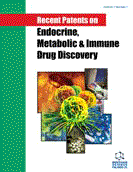Abstract
Malaria is one of the most widespread infectious diseases in the world. Emergence of multi-drug resistant Plasmodium strains makes it crucial to identify new classes of compounds for anti-malarial therapy. Novel anti-malarial compounds from natural sources (Gomphostema niveum) as well as synthetic chemicals (5-aminolevulinic acid) have been reported in recent patents. Plasmodium falciparum leucyl aminopeptidase (PfA-M17) is a validated target for antimalarial drug development. However, known aminopeptidase inhibitors beset with the problem of non-specificity. Therefore, 3D structural models of PfA-M17 human homologs, Leucine aminopeptidase3 (hLAP3) and probable leucine aminopeptidase (hNPEPL1) were predicted for molecular docking based screening of potential inhibitors for their off target activity. Comparison of IC50 and docking scores of highly active hLAP3 inhibitors shows good correlation (r2≈0.8). Further, docking analysis with potential PfA-M17 inhibitor Compound-X (identified through virtual screening) shows much higher binding affinity towards PfA-M17 (docking score -11.44) than hLAP3 (docking score -4.26) and hNPEPL1 (docking score -5.08). This lead compound, Compound-X can act as a scaffold for further increasing PfA-M17 binding affinity and hLAP3 and hNPEPL1 3D structure models will be useful for screening of PfA-M17 specific inhibitors.
Keywords: Adverse drug event, drug designing, drug toxicity, homology modeling, infectious disease, in silico screening, malaria, molecular docking.
 45
45





















